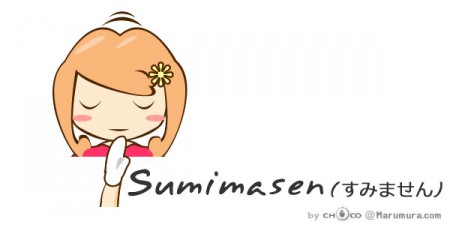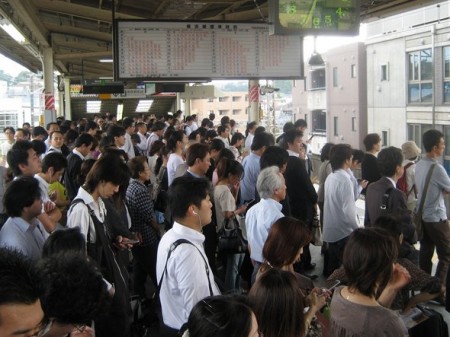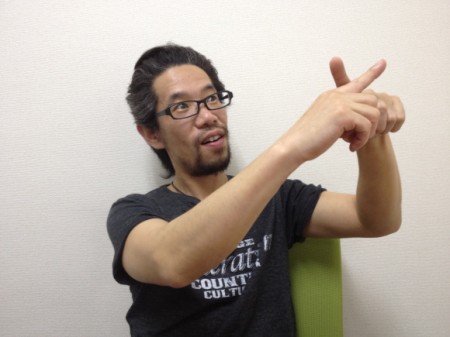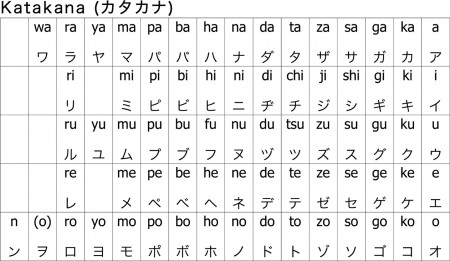Ask John: How Much Japanese Does an American Need to Know to Visit Japan?

Question:
What kind of advice would you give to someone interested in visiting Japan but concerned about not speaking the language?
Answer:
I’ve visited Tokyo six times since 2000. The first time I went, I spent two weeks in the city. The most recent time I went, which concluded just last week, I stayed for slightly over two weeks. Yet since 2000 my familiarity with Japanese language has stayed at a very elementary level. As a college undergrad in the late 1990s I took one semester of Japanese language. Everything else I know I’ve simply picked up on my own through years of exposure to Japanese language. So I can assure tentative visitors to Japan that a language barrier is not an obstacle to having a wonderful vacation adventure in Tokyo.
It’s not my intention to cast dispersion or encourage laziness; I’m strictly going to address practical reality. As of the 2002 census, Japan had a 99% literacy rate. By 2003 estimates, America likewise had a 99% literacy rate. On average, urban Japanese citizens are at least as intelligent, if not smarter than the average American due to Japanese citizens attending more hours of school than the average American does. The point of these statistics is that an American visitor to Japan can reasonably rely on the notion that two intelligent people can moderately effectively communicate simple and practical concepts with each other despite a difference in language. Furthermore, foreign visitors can rely on Japan’s infallible sense of politeness to assume that Japanese citizens will make special effort to comprehend and assist foreign visitors (so long as the foreigner asks for help). A familiarity with a very few simple Japanese words and concepts can go a tremendous distance toward helping an English speaker in Japan.
Naturally, the more Japanese language one knows, the better off one will be when visiting Japan. But practically speaking, an English speaker without any familiarity with Japanese language can navigate Tokyo society with just one magic word. The one single Japanese word that every English speaking visitor to Japan should be familiar with is “Sumimasen,” the Japanese word for “Excuse me.” The word, “Sumimasen,” is both an apology and a request. As a foreign visitor, if you bump into someone or take too long counting your change or somehow cause any sort of minor inconvenience, “Sumimasen,” will be accepted as apology. Moreover, the word “Sumimasen,” is magic because it will immediately cause any Japanese retail or customer service employee to drop whatever he or she is doing and instantly respond to you. Due to the exceptionally polite and private nature of Japanese society, retail and customer service employees such as sales clerks and restaurant wait staff will never ask, “May I help you?” because they don’t want to disturb you. However, if you ask for help, they will immediately attend your inquiry. If you need to ask for directions to a location, have a question about an item in a store, want your check at the end of a meal in a restaurant, or simply want to get the attention of a Japanese person who seems to be politely ignoring you, just say, “Sumimasen.” Typically you’ll have the person’s full attention before you even finish speaking the word.
Americans are used to restaurant waiters and waitresses naturally bringing a bill to the table near the end of the meal. However, most restaurants in Tokyo will not provide a check until asked for one. Since placing a bill on the table at the end of a meal could be considered rude, like a silent request for the patrons to pay and leave, most restaurants won’t do it. So American visitors may feel uncomfortable sitting patiently at their table indefinitely, wondering when the check will arrive. If a waiter or waitress doesn’t bring a check, either say, “Sumimasen” then ask for a check – English is fine – or make an “X” sign with your index fingers. An “X” sign with your index fingers is the Japanese universal symbol for, “We’re ready to leave now; please bring the bill.”
Most Japanese restaurants will automatically serve you tea. If, like me, you’re the unusual type that doesn’t drink tea, and you don’t see pitchers of serve-yourself ice water available on the counter or tabletop, “Mizu kudasai,” (water please) is the polite and simple way to ask for a glass of water.
When in stores and restaurants, if you’re asked a question in Japanese language that you don’t understand, just say, “No,” or shake your head. When you pay at stores or restaurants, the most common questions that you’ll be asked in Japanese are, “Do you have a point card?” and “Do you want your receipt.” If you’re unsure of what’s being asked, “No” is always a safe, harmless answer.
Typical otaku visitors to Japan will want to know the phrase, “Ikura desu ka?” which means, “How much does it cost?” Typically anime and manga collectables will have clearly visible price tags. But periodically an otaku will spot a rare, desirable item in a glass display case lacking a price tag. First approach the shopkeeper and say, “Sumimasen,” to signal that you have a question. Say, “Case,” in English to signify that you want something from a showcase, then point out the item in question and ask, “Ikura desu ka?” to ask for the item’s price.
I do recommend learning to read Katakana. The anime community uses Katakana extensively to spell words like “anime,” “cosplay,” “figure,” “gachapon,” “game,” “card,” “café,” and “character goods.” The flight from the United States to Japan takes 14 hours. A typical person can memorize the Katakana alphabet in only two or three hours. Especially when visiting Akihabara’s anime district, being able to read simple Katakana will tremendously assist you in finding the precise type of anime stores that you want to visit.
One more piece of advice I can provide is not related to language but appearance. Clothes, especially shirts, with large, bold images on the chest are very rare in Tokyo. If you want to feel comfortable while in Tokyo, fit in. Bright, eye-catching colored clothes are uncommon and stand out. Tokyo residents typically wear subdued colors including black, blue, grey, brown, tan, and subdued yellow, pink, and cream white. Typical Japanese young people wear shirts with just text or images that match and blend into the color of the shirt. Bright, clashing colors like comic book t-shirts stand out like a sore thumb in Tokyo society.

Tokyo is a largely bilingual city. The train stations have English language signs and captions for practically everything. The automated machines that sell commuter train tickets have an option to display instructions in English. Tokyo’s big otaku shopping districts, Akihabara and Nakano Broadway, are familiar with English-speaking visitors. Many restaurants in Tokyo have picture menus, or the wait staff will take the initiative to offer an English language menu to guests that look foreign. Practically all of Tokyo’s major hotels have bilingual English-speaking front-desk staff. Most Tokyo residents have some consciousness of English, so common English words like, “Please,” “Sorry,” and “Okay” are understood just as much in Tokyo as here in America. Tokyo residents and especially retail workers are smart enough to usually quickly understand what you’re trying to communicate, even with a difference in language. Tokyo is not a difficult city for English-speakers to navigate. Just remember the one magic word, “Sumimasen.”



